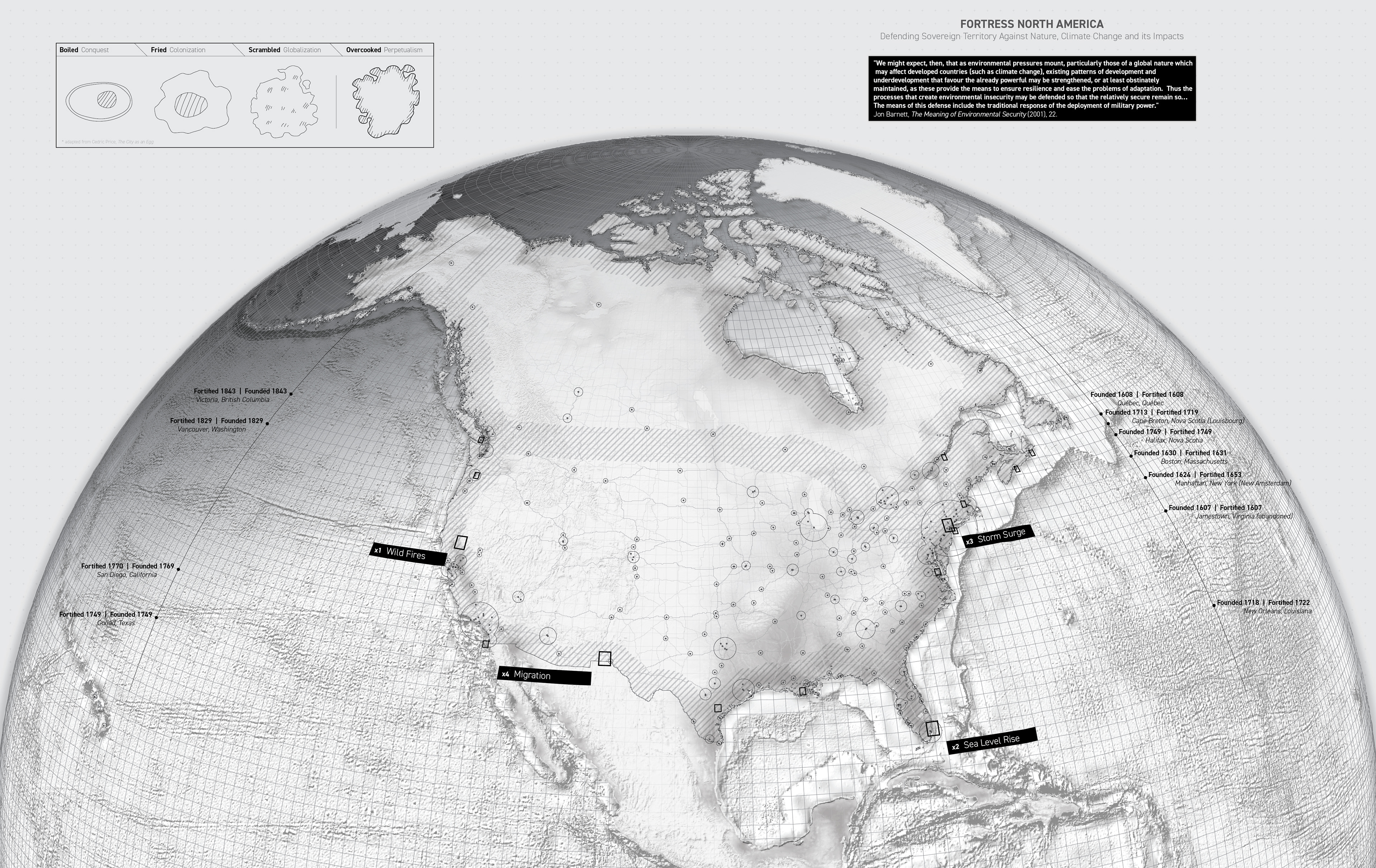Fortress North America
When Europeans first crossed the Atlantic, they sailed past dragons and monsters. Drawing these creatures on the uncharted edges of maps, sailors imagined them as unpredictable, dangerous, and angry. In many ways, these dragons and monsters embodied nature. When settlers landed on the shores of North America, their belief in the threat of nature did not diminish. Instead, they built forts. Everywhere uninvited immigrants set down, they constructed an “outside” by fortifying themselves within a defended outpost. Their walls were an expression of fear: fear of the unknown, fear of the other, fear of nature.
As settlements grew, colonists quickly built lines of defense beyond their forts. As area within fortifications expanded, the outside contracted. However, it did not shrink on its own accord. Rather, European settlers exploited nature by logging, mining, draining, tilling, grazing, killing, and eating their way across the continent. Fortifications, furthermore, allowed settlers to import consumable goods while keeping out the unwanted byproducts of extraction. Exploitation has always depended on a powerful military to assert the right to take from others and defend the benefits amassed.
It was not long before the United States of America and the Dominion of Canada took administrative charge of the continent, tamed all of nature, and replaced lines of defense with spheres of control. Exploitation continued, just somewhere else, some other outside. Nature had not resisted, although military logic suggests that one’s enemy is hiding, waiting for an opportunity to strike. So, the U.S. led a campaign of persistent global observation with satellites tracking nature’s changes.
The fear of nature is back. Climate change launches hurricanes, floods, wildfires, droughts, and caravans of migrants at sovereign borders. Yet, these attacks are proportional to the overexploitation of nature. While the outside had previously contained the impacts, they are now global and threaten advantaged nations. The exploitation of others is unsustainable. In this era of fortification, hardened borders are an index of commitment to the status quo. Designers have denounced border walls, yet there is no critique of seawalls, storm surge barriers, firebreaks, or other defenses against outside forces of nature. Realizing reparations for what we have stolen would be a more just application of design instead of protecting past gains. It is time to reevaluate our militaristic posture against nature, which perpetuates a system of exploitation that increases risks to others outside our borders and beyond our concerns






Competition
Fortress North America
with Roxane Grégoire (MARCH), Noora Hijra (MLA), Kendra Scanlon (MLA), Jordan Yule (MLA)
Borderlands International Design Ideas Competition, University of Calgary School of Architecture, Planning and Landscape (SAPL), Calgary, AB.
Peer reviewed finalist.
Jury: Luis Callejas, Danika Cooper, Clare Lyster, Dima Rachid, Lola Sheppard, Rania Ghosn, Niall Kirkwood, and Alberto de Salvatierra.